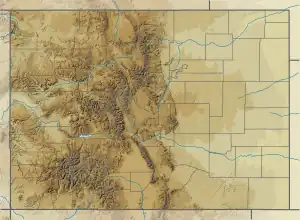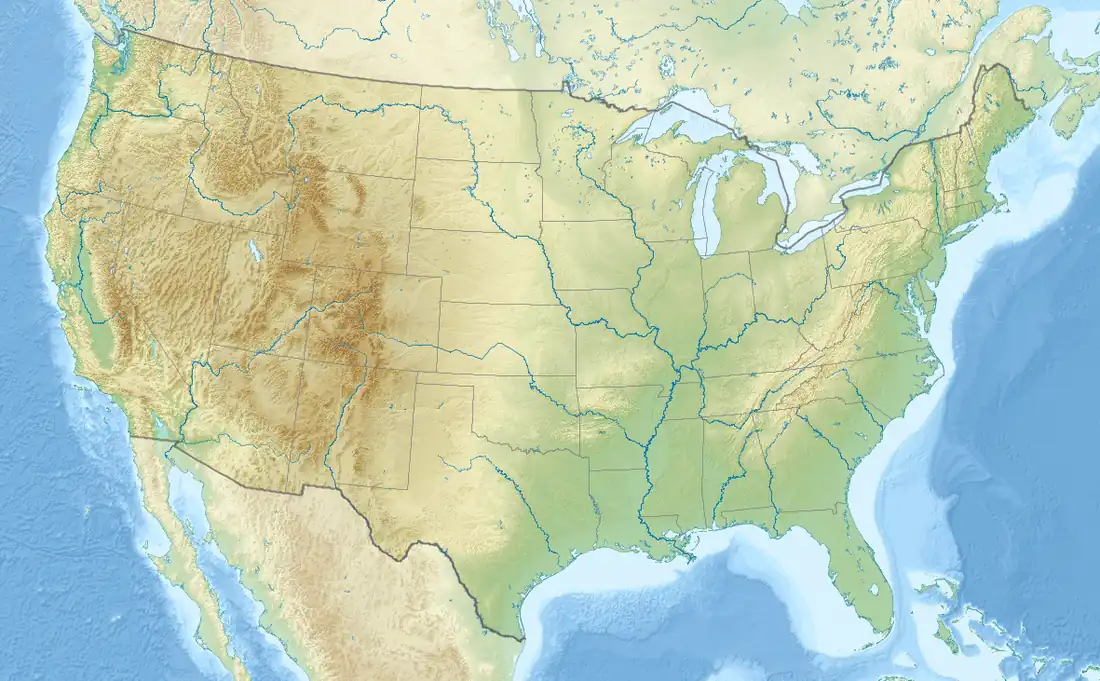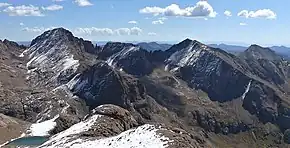| Jupiter Mountain | |
|---|---|
 Northwest aspect, from Chicago Basin | |
| Highest point | |
| Elevation | 13,836 ft (4,217 m)[1][2] |
| Prominence | 350 ft (107 m)[2] |
| Parent peak | Windom Peak[2] |
| Isolation | 0.60 mi (0.97 km)[2] |
| Coordinates | 37°36′45″N 107°35′31″W / 37.6124995°N 107.5920043°W[3] |
| Geography | |
 Jupiter Mountain Location in Colorado  Jupiter Mountain Jupiter Mountain (the United States) | |
| Location | La Plata County, Colorado, U.S.[3] |
| Parent range | San Juan Mountains, Needle Mountains[2] |
| Topo map | USGS 7.5' topographic map Columbine Pass, Colorado[3] |
Jupiter Mountain is a high mountain summit in the Needle Mountains range of the Rocky Mountains of North America. The 13,836-foot (4,217 m) thirteener is located in the Weminuche Wilderness of San Juan National Forest, 27.7 miles (44.6 km) northeast by north (bearing 33°) of the City of Durango in La Plata County, Colorado, United States.[1][2][3]

Windom Peak (left) and Jupiter Mountain (right) from the west
Climate
According to the Köppen climate classification system, Jupiter Mountain is located in an alpine subarctic climate zone with cold, snowy winters, and cool to warm summers.[4] Due to its altitude, it receives precipitation all year, as snow in winter, and as thunderstorms in summer, with a dry period in late spring.
Historical names
- Jupiter Mountain – 1972 [3]
- Jupiter Peak
See also
References
- 1 2 The elevation of Jupiter Mountain includes an adjustment of +1.777 m (+5.83 ft) from NGVD 29 to NAVD 88.
- 1 2 3 4 5 6 "Jupiter Mountain, Colorado". Peakbagger.com. Retrieved November 5, 2014.
- 1 2 3 4 5 "Jupiter Mountain". Geographic Names Information System. United States Geological Survey, United States Department of the Interior. Retrieved November 5, 2014.
- ↑ Peel, M. C.; Finlayson, B. L.; McMahon, T. A. (2007). "Updated world map of the Köppen−Geiger climate classification". Hydrol. Earth Syst. Sci. 11. ISSN 1027-5606.
External links
This article is issued from Wikipedia. The text is licensed under Creative Commons - Attribution - Sharealike. Additional terms may apply for the media files.